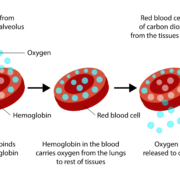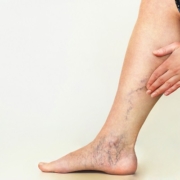Posts
Blood Oxygen Level; all you need to know:
/0 Comments/in Health, Health and wellness tip, Respiratory /by Rachel MataWhat is Blood Oxygen Level?
Blood oxygen level measures the oxygen circulating in your blood. Red blood cells transport oxygen from the lungs to the body’s parts, indicating how effectively the body moves oxygen from the lungs to the cells. This level is crucial for health.
Measuring Your Blood Oxygen Level
You can measure your blood oxygen level in two ways: through an arterial blood gas test or a pulse oximeter. The arterial blood gas test, a blood test, accurately measures your blood’s oxygen level and checks your blood’s pH balance. Although accurate, this test is invasive. On the other hand, a pulse oximeter offers a noninvasive estimate by sending infrared light into capillaries in your finger, toe, or earlobe and measuring the reflected light. This method provides a reading of your blood’s oxygen saturation (SpO2 level) but has a 2 percent error margin. Despite being slightly less precise, doctors prefer it for its convenience in offering quick readings.
How Blood Becomes Oxygenated
Oxygen saturation in blood starts in the lungs’ alveoli, tiny air sacs responsible for exchanging oxygen and carbon dioxide molecules with the bloodstream. The Oxygen binds to hemoglobin in the blood, which then delivers oxygen to tissues while carrying carbon dioxide back to the lungs. Ideally, oxygen levels in your blood depend on several factors, including the amount of inhaled oxygen, alveoli efficiency, hemoglobin concentration in red blood cells, and hemoglobin’s oxygen attraction. Usually, hemoglobin carries enough oxygen for the body’s needs, but certain diseases can impair its ability to bind oxygen.
Low Blood Oxygen Levels
An oxygen saturation level below 95% is generally abnormal, and below 90% signals an emergency requiring oxygen therapy. The brain, highly sensitive to hypoxia, can suffer cell death within five minutes of oxygen deprivation, leading to serious outcomes like coma, seizures, and brain death if prolonged. Identifying and addressing the cause of low oxygen saturation is crucial. Conditions like COPD and asthma typically result from inadequate air exchange in the lungs and alveoli. Treatments may include oxygen therapy, steroids, or bronchodilators to open the airways.
Treatment
For low blood oxygen levels, treatment options include supplemental oxygen, available in-office or for home use, though some devices require a prescription. Lifestyle changes, like a healthy diet, can also improve oxygen levels and overall health. Since iron deficiency often leads to low oxygen saturation, consuming iron-rich foods such as meat, fish, kidney beans, lentils, and cashew nuts is beneficial.
Disclaimer
This information aims to enhance understanding and knowledge of health topics and is for informational purposes only. It is not a substitute for professional medical advice, diagnosis, or treatment. Always consult your physician or another qualified healthcare provider with any questions about a medical condition or treatment. Do not disregard professional medical advice or delay seeking it based on what you have read on this website.
References:
A Guide to Healthy Living for Seniors
/0 Comments/in Health, Health and wellness tip /by Rachel MataWhat is Healthy Living for Seniors
As you grow older, you go through many changes, and you may need to adjust your lifestyle for healthy aging. Our minds and bodies undergo a wide variety of mental, emotional, and physical changes. While some aspects of life may become more difficult, active living for older adults is still well within reach. In this guide to healthy living for seniors, we’ll explore the many ways you can live a full, satisfying life well into your golden years. Healthy eating and regular physical activity can be keys to good health at any age. Making suitable lifestyle choices may also prevent some health problems, such as diabetes, heart disease, and some cancers.
What foods should seniors avoid?
Food plays a central role in all of our lives. Eating is both a way to sustain ourselves and an important part of our culture. People often mark major life events with a large feast from wedding cakes to birthday cakes, beautiful holiday spreads with family to casual lunches with friends. As adults age, they need fewer total calories, but higher amounts of some nutrients, especially calcium and vitamin D. In terms of nutrition, you need to focus on quality, not quantity. For both optimal physical and mental health, older adults truly need to make every calorie count.
Here are foods that you should cut down on (or avoid eating altogether) as you get older, and why:
- Raw or undercooked eggs, meat, and poultry.
Undercooked foods such as eggs, meat, poultry, and sushi can cause food poisoning, which can trigger sepsis and septic shock. Although anyone can develop infection and sepsis, seniors are at higher risk.
- High-sodium foods.
Too much salt can be a problem for older adults, especially if you have a history of hypertension. If your food is lacking flavor, try adding different types of herbs and spices rather than loading up with table salt. Additionally, always review the sodium content on nutritional labels.
- Caffeine.
Caffeine not only keeps many people from getting a good night’s sleep, but it may also increase anxiety and make your heart beat more quickly or irregularly. This could be dangerous if you have a heart condition. Caffeine can also be found in many teas, some sodas, chocolate, and even some medications, including over-the-counter pain killers.
- Sodas and sugary drinks.
Excess sugar also leads to obesity and other health issues. An ice-cold cola may seem tempting if you’re hot and thirsty, but sodas and many sports drinks contain a large amount of sugar. A cola can contain 39 grams of sugar in one 12-ounce serving, the equivalent of almost 10 teaspoons of sugar! If you have prediabetes, regular consumption of these types of drinks may raise your blood sugar to a diagnosis of diabetes.
- Alcoholic beverages.
Enjoying an occasional alcoholic beverage is harmless for many people. However, if you live with a chronic illness, such as diabetes, or you take certain types of medications, such as antihistamines, painkillers (analgesics), and medications for hypertension (high blood pressure), alcohol should be avoided.
Why is keeping a healthy weight important?
Aim for a stable weight as you get older. People of all ages need protein for strong, healthy bodies. Some older adults do not get the protein they need to maintain muscle mass, fight infection and recover from an accident or surgery. Keeping a healthy weight may help improve your health. The weight that is healthiest for you may be higher than that of a younger person. Ask your health care professional what a healthy weight for you may be.
Sometimes older adults feel lonely, sad, low, or stressed because of life changes, loss of loved ones, health problems, caring for other family members, or financial issues. Being good to yourself may help you improve your lifestyle habits, your “get up and go,” and your ability to cope with the demands of daily living.
Here are some ideas for being good to yourself
- Stay in touch with family, friends, or former coworkers to stay engaged and to keep your spirits up.
- See your health care professional regularly and share any concerns.
- Get enough sleep.
- Join a walking group or another social group.
- If you are retired, pursue a new hobby or volunteer to help keep you active and social.
- Surround yourself with people you enjoy.
Remember, it’s never too late to improve your eating habits, become more physically active, and be good to yourself for a healthier life. Strengthening your immune system and staying active can keep you healthier and make you less susceptible to illnesses throughout the year. You are never too old to enjoy the benefits of improved nutrition and fitness. With nutrient-rich foods and activities with friends, you can feel an immediate difference in your energy levels and enjoyment of life. In fact, as we get older, our food and activity choices become even more important to our health.
Disclaimer
The information, including but not limited to, text, graphics, images and other material contained on this website are for informational purposes only. The purpose of this website is to promote broad consumer understanding and knowledge of various health topics. It is not intended to be a substitute for professional medical advice, diagnosis, or treatment. Always seek the advice of your physician or another qualified healthcare provider with any questions you may have regarding a medical condition or treatment before undertaking a new health care regimen, and never disregard professional medical advice or delay in seeking it because of something you have read on this website.
References:
https://www.healthline.com/health/flu/boost-immune-system-over-65#quit-smoking
What are the symptoms of low oxygen levels?
/0 Comments/in Health, Health and wellness tip, Respiratory /by Rachel MataWhat is Blood Oxygen Level?
Blood oxygen level is a crucial measure indicating the amount of oxygen circulating in our blood. Essentially, red blood cells are responsible for transporting oxygen from the lungs to the body’s various parts. Interestingly, too little or too much oxygen can have serious health consequences. Therefore, it’s vital to seek immediate medical care if blood oxygen levels fall significantly. Similarly to how we monitor blood pressure or blood sugar, keeping an optimal blood oxygen level is essential for maintaining good health.
What Should Your Oxygen Level Be?
Under normal conditions, oxygen saturation levels should range between 95% to 100%. If levels fall below this range, one must consult a doctor. Moreover, oxygen levels between 91% and 95% might indicate an underlying condition, urging immediate medical consultation. Notably, a level below 90% signals a medical emergency, known as hypoxemia, requiring urgent care. Furthermore, if oxygen saturation dips below 85%, it severely affects the brain, potentially leading to vision changes and loss of consciousness. Alarmingly, levels below 80% impact the brain, liver, and other vital organs significantly. Lastly, cyanosis, which indicates a saturation below 67%, presents as a bluish tinge on the skin or mucous membranes due to insufficient oxygen.
Symptoms of Low Oxygen Levels
Interestingly, hypoxemia, or the condition of having unusually low blood oxygen, triggers a variety of symptoms that can vary significantly from person to person depending on how low the oxygen level is. Common symptoms include shortness of breath, headaches, restlessness, dizziness, rapid breathing, chest pain, confusion, high blood pressure, lack of coordination, visual disorders, a sense of euphoria, and a rapid heartbeat. Furthermore, extremely low levels lead to cyanosis, which is marked by a bluish discoloration of the skin around the lips and fingernails.
Preventing Low Oxygen Levels
Fortunately, with the right medical advice combined with specific changes in lifestyle and food habits, we can maintain appropriate blood oxygen levels and prevent them from getting too low. Healthcare workers recommend adopting a nutritious diet, considering yoga and breathing exercises, exercising regularly, using preventive medications such as inhalers, and avoiding triggers that may cause breathing difficulties. Additionally, keeping yourself hydrated, stopping smoking, and avoiding secondhand smoke are crucial steps. Treating the underlying condition responsible usually improves blood oxygen levels. For individuals living with chronic lung diseases or those who have contracted COVID-19, regular blood oxygen monitoring might be necessary. Adopting lifestyle changes, in conjunction with oxygen therapy, could significantly help raise their oxygen saturation levels. Early diagnosis and appropriate treatment are the keys to avoiding complications and ensuring good health. Therefore, booking an appointment with specialists in the field to get the right medical advice is highly recommended.
Disclaimer
This information serves to promote broad consumer understanding and knowledge of various health topics. Importantly, it is not intended to be a substitute for professional medical advice, diagnosis, or treatment. Always seek the guidance of your physician with any questions you may have regarding a medical condition or treatment. Moreover, never disregard professional medical advice or delay in seeking it because of something you have read on this website.
References:
Anxiety During Pregnancy
/0 Comments/in Health and wellness tip, Pegnancy tips, Personal, Pregnancy, Pregnancy Problem /by Rachel MataWhat is Anxiety?
Anxiety is feelings of worry, stress, or fear, and is a normal part of life. Anxiety is not only part of being pregnant, it’s part of being human. We all worry, and pregnancy can often amplify those worries. Antenatal anxiety is a very common experience. More than 1 in 10 women experience anxiety at some point during their pregnancy.
Pregnancy can be an incredibly wonderful time in your life, as well as a very scary time in your life. Pregnancy brings a mix of feelings, and not all of them are good. Your whole life as well as your body is going through a number of changes. These changes can be especially anxiety-provoking if this is your first pregnancy. You want everything to go perfectly, but you find yourself struggling with an array of worries and fears about every possible thing that could go wrong. If you’re feeling worried, you’re not alone. Worry is common, especially during a woman’s first pregnancy or an unplanned one. It can be even harder if you’re dealing with depression or anxiety. The more you think about those things, the worse your anxiety becomes.
What causes anxiety during pregnancy?
Pregnancy is also a time of tremendous change and hormonal changes during pregnancy may affect the chemicals in your brain. This can cause anxiety. After all, not everything that makes you feel anxious is under your control. Some of these feelings and sensations are welcomed, while others are downright uncomfortable and scary. You may even have complications or other issues that arise that keep you up at night.
What Are Some Symptoms of Anxiety During Pregnancy?
Since there are different types of anxiety disorders, the symptoms vary. Speak with your doctor about any symptoms you experience so he or she can accurately diagnose and treat you. Some common symptoms of anxiety disorders include:
- feeling an uncontrollable sense of anxiousness
- worrying excessively about things, especially your health or baby
- feeling irritable or agitated
- having tense muscles
- Feeling nervous, anxious or on edge frequently
- Finding it difficult or impossible to relax
- Feeling restless and hard to stay still
- Feeling afraid, or thinking that bad things will happen
- Inability to concentrate
- Difficulty sleeping
Things You Can Do to Manage Your Anxiety
- Avoid Scary Stories and Images
- Stop Thinking of “What Ifs”
- Meditate
- Deep-breathing exercises
- Avoid Stress
- Find a release
- Talk about it
- Rest up
Treatment for Anxiety During Pregnancy
- Counseling or therapy
- Support groups
- Medication
- Other approaches
- Exercise
- Eating a healthy diet
- Get enough sleep
- Meditate and breathe
When to See a Doctor?
Even if you experience only mild symptoms of anxiety, it is important to inform your doctor. If your anxiety is affecting your daily life or if you’re having frequent panic attacks, you should call your doctor right away. Only they can diagnose you with an anxiety disorder and recommend the best, most effective treatment options for you. Seeking help is the best step you can take to ensure that you and your child stay safe and healthy. The sooner you get help, the sooner you’ll be able to gain peace of mind for your health and the health of your growing baby.
Always remember; Take care of yourself as much as you can, for your and your baby’s health. Be sure to eat well, exercise, get enough sleep, and take your prenatal vitamins. Look for ways to reduce your stress.
Disclaimer
The information, including but not limited to, text, graphics, images and other material contained on this website are for informational purposes only. The purpose of this website is to promote broad consumer understanding and knowledge of various health topics. It is not intended to be a substitute for professional medical advice, diagnosis, or treatment. Always seek the advice of your physician or another qualified healthcare provider with any questions you may have regarding a medical condition or treatment and before undertaking a new health care regimen, and never disregard professional medical advice or delay in seeking it because of something you have read on this website.
References:
https://www.healthline.com/health/pregnancy/anxiety-coping-tips#treatment
Varicose Veins During Pregnancy
/0 Comments/in Health and wellness tip, Pegnancy tips, Pregnancy /by adminWhat are varicose veins?
Varicose veins are a common, usually harmless part of pregnancy for some women. Many women first develop varicose veins or find that they get worse during pregnancy. They happen when the uterus applies pressure to the large vein (the inferior vena cava) that carries blood back to the heart from your feet and legs. You may have inherited varicose veins and could also get them during pregnancy.
Varicose veins are the large, swollen blood vessels found predominantly in the legs, but that can show up almost anywhere in the lower half of your body and even your rectum or vulva. Varicose veins are unusually swollen veins that may bulge near the surface of the skin. These blue, red, or purple veins sometimes look squiggly or ropelike and are most likely to show up on your legs, though in pregnancy it’s possible to get them on your lower pelvic area, buttocks, or elsewhere. (Hemorrhoids are just varicose veins in the rectal area.) When they swell above the surface of the skin, they create those distinctive purplish lumps that look alarming but are quite harmless and fairly common, affecting up to 40% of pregnant women, according to some research.
Pregnancy causes many changes in your body and some of these changes can cause varicose veins.
Changed in body during pregnancy:
- Progesterone – This hormone is increased during pregnancy. It is essential for a healthy pregnancy, but it also causes the veins to relax. Blood does not move as easily through these relaxed veins. As blood builds up, the pressure within the vein increases, and the vein enlarges.
- Increased blood – The volume of blood in a pregnant woman’s body increases during pregnancy. More blood overall means there is more blood within the veins, and this increases the strain on the vein valves and walls.
- Pressure from the uterus – The growing fetus within the uterus pushes against the organs and blood vessels in the abdomen. Blood moves from the leg veins to veins in the pelvis, or lower abdomen, before moving back to the heart. The pressure placed on these pelvic veins by the uterus prevents blood from flowing out of the legs.
Tips On How To Prevent Varicose Veins Naturally During Pregnancy
While varicose veins can be hereditary, and you can’t prevent the circulatory changes that occur during pregnancy, there are some ways you can prevent or minimize varicose veins.
- Avoid sitting or standing in the same position for long periods of time. Make sure to take breaks to change your position.
- Get regular exercise. Talk with your doctor to confirm if it is safe for you to exercise during pregnancy.
- Wearing maternity support hosiery or thigh-high compression stockings work by applying pressure to the outside of your legs. This helps counteract the pressure within the veins and prevents swelling and bulging.
- Avoid crossing your legs while sitting; it prevents blood from moving out of the veins, which increases the pressure within them.
- Elevate your legs periodically to improve circulation.
- Sleep on your left side. This will help relieve pressure on the inferior vena cava.
- Reduce sodium intake to minimize swelling of the veins.
- Drink plenty of water and eat enough fiber to prevent constipation.
- Avoid High Heels; it prevents the leg muscles from working, and this keeps the blood in the veins.
- Sleep on your Left Side; can relieve the pressure on the veins in your abdomen and help your leg veins drain while you’re sleeping.
- Exercise daily. Even just a brisk walk around the block can improve your circulation.
Are varicose veins in pregnancy ever serious?
During pregnancy varicose veins are relatively common and usually painless and harmless. The good news for some women is that varicose veins may improve or disappear after you give birth, especially if you didn’t have any before you got pregnant. If your varicose veins persist and become too uncomfortable to live with, or even if you’re just unhappy with how they look, ask your provider to refer you to a specialist to find out about other treatment options.
Varicose vein surgery is not recommended during pregnancy as varicose veins generally improve after giving birth. . If your varicose veins persist and become too uncomfortable to live with, or even if you’re just unhappy with how they look, ask your provider to refer you to a specialist to find out about
Disclaimer
The information, including but not limited to, text, graphics, images and other material contained on this website are for informational purposes only. The purpose of this website is to promote broad consumer understanding and knowledge of various health topics. It is not intended to be a substitute for professional medical advice, diagnosis, or treatment. Always seek the advice of your physician or another qualified healthcare provider with any questions you may have regarding a medical condition or treatment before undertaking a new health care regimen, and never disregard professional medical advice or delay in seeking it because of something you have read on this website.
References:
https://www.babycenter.com/pregnancy/your-body/varicose-veins-during-pregnancy_271
https://kidshealth.org/en/parents/veins.html
https://www.whattoexpect.com/pregnancy/symptoms-and-solutions/varicose-veins.aspx






